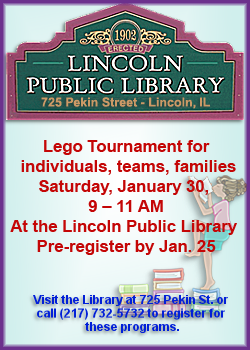 Review by Review by
Richard SumrallToday's job market has never been more
competitive. Anyone seeking employment must compete with a growing American
labor force and worker competition from foreign countries. This places a
premium on the earliest start to a child's education.
In their new book, "What Your Preschooler Needs to Know," authors E.D.
Hirsch Jr. and Linda Bevilacqua dispel the myth that "teaching pre-literacy
and pre-math skills to preschoolers is unnatural, premature and
developmentally inappropriate." Their book is designed to help parents
select read-aloud opportunities for their children to stimulate their
natural inquisitiveness and curiosity. This participation between parent and
child gives the preschoolers "the fundamentals they need to prepare for a
happy, productive time in school -- and for the rest of their lives."

Let's take a look at the book's six chapters and some of the read-aloud
examples.
Poems
Poems are a perfect way to begin establishing the read-aloud experience
with a preschooler. They are fun to read, are composed with formal written
language, and contain a wonderful rhythm and musical combination. Learning
to recite poems like "Rain, Rain Go Away" or "Pat-A-Cake" helps develop a
child's memory skills and encourage activities like acting out or fingerplay.
Songs
Children love to sing. As the authors point out, singing is an effective
form of communication and an outlet for creativity and emotion. Listening to
music improves a child's sense of hearing and nurtures their mathematical
skills through the song's rhythms and harmonies. Best of all, music inspires
movement, motion and physical activity. These inspirations are evident in
songs like "Pop Goes the Weasel, "A-Tisket, A-Tasket" and "I'm a Little
Teapot."
Stories
According to the authors, the one thing parents can do to give their
child a better chance in school is to read with them every day. A regular
story time in the household is a retreat for parent and child that enriches
the learning process and promotes thinking and talking. Stories like "The
Three Little Pigs," "Why Flies Buzz" and "The Lion and the Mouse" are more
than a mundane "sit and listen" experience; they actually serve as a
"dynamic dialogue between you and your child."
[to top of second column]
 |

History
One of the best ways to broaden a preschooler's knowledge of the
world is through lessons on history. Nonfiction read-alouds on
historical figures or events help the child better understand
concepts, beliefs and ideals. Historical stories such as "Abraham
Lincoln, Log Cabin President" or "Martin Luther King Jr., A Man of
Peace" are different from poems or songs in that they should be
shared but not necessarily memorized. The goal here is to "grasp the
idea that real people lived in times gone by."
Science
Exercising cognitive abilities improves a child's listening,
looking, thinking and motion skills. Improving these skills can be
accelerated through an appreciation for the learning value of
science. The authors stress: "Science means learning about the
world. … That learning begins with casual experiences and
observations." Scientific investigation is at its best when it
demonstrates the objective of education -- talking about a topic,
writing down the child's comments and questions, and beginning the
investigation. As a guide for parents, the authors have chosen six
elements found in the scientific world -- animals, humans, plants,
water, light and air.

Art
Art is a primary outlet for creative expression in children. The
interaction between the materials (paints, markers, clay, etc.) and
their motor skills encourages an appreciation for objects and images
of beauty, meaning and purpose. Parents can use the book's selection
of well-known works of art to read aloud and study their themes,
imagery, colors and shapes. Paintings such as Emile Munier's "The
New Pets" offer a myriad of instructional possibilities: What is
happening in the painting? Do these children look like people you
know? Why are they different? Other examples of art, such as Edgar
Degas' sculpture "The Little Dancer," teach the child that art is
created through many mediums. The same is also true with "Senecio,"
Paul Klee's abstract of the human face. The point is to pique the
child's interest in self-expression through artistic means.
"What Your Preschooler Needs to Know" is an excellent choice to
help prepare preschool children for kindergarten and the first years
of elementary school. This book is recommended to every parent of a
preschool child.
[Text from file received
from Richard Sumrall,
Lincoln Public Library District] |